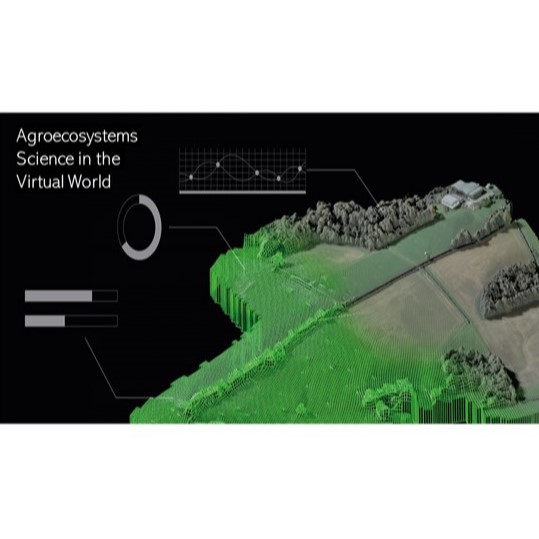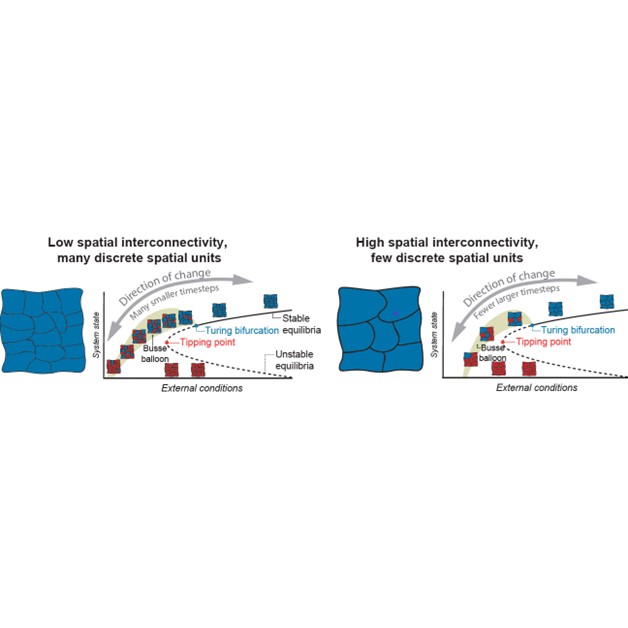Do seabirds enhance the connectivity of reef fishes and elasmobranchs between mangroves and coral reefs? Seabirds forage for fish in the open ocean, returning to islands to roost and breed. In doing so, they transfer nutrients to islands through their droppings (guano), which is known to boost plant and animal productivity in island ecosystems. Seabird […]
Read More
The world’s rainforests are incredible reservoirs of biodiversity, holding over 60% of the world’s animal species and 67% of all tree species. While this remarkable diversity makes them a biologist’s paradise, it also makes them very difficult to study, and there are many fundamental knowledge gaps about how these ecosystems function across time and space. […]
Read More
The diversity of plants and animals found on modern farms has been severely depleted owing to the simplification of landscapes and intensification of crop production. This has had negative consequences for the ecosystem services of pollination and pest control as well as compromising the cultural value of the countryside. There is now a broad consensus […]
Read More
Grazing systems are a key target for reducing the greenhouse gas emissions of agriculture, towards sustainable livestock production. Regenerative farming practices such as herb rich pastures (herbal leys), and controlled areas of grazing (cell grazing), show promise as pathways towards net zero agriculture – yet little is known of the impacts of these practices on […]
Read More
The need for data-informed farmer decision-making has never been more critical. Climate change, floods, droughts, pests, diseases, and political pressures all pose significant threats to our ability to grow food. Agriculture itself sometimes makes these problems worse – being responsible for many negative environmental impacts including greenhouse gas emissions, water pollution, and biodiversity loss. But, […]
Read More
Climate change forecasts for the UK suggest changes to the intensity and frequency of flooding, drought, heat and strong winds, as already evidenced by the record-breaking years observed in the UK over the past decade. At present, we do not have reliable data on the impacts of climate stresses – including extreme events – on […]
Read More
The Pantanal is the world’s largest tropical wetland and home to numerous endangered and threatened species. It is also increasingly impacted by human activities, particularly cattle ranching. In recent years, it has suffered severe wildfires and altered hydrology. The impacts of these changes on the Pantanal are understudied, yet have global significance given the wide […]
Read More
Monitoring biodiversity is a major research focus, with the current upsurge in initiatives to finance biodiversity conservation (e.g. Target 19, Kunming–Montreal CBD). Measurements must be transparent, repeatable, efficient and auditable. Accordingly, researchers have developed visual (imagery), auditory (sound recording), genetic (eDNA) and structural (LiDAR) sensing technologies for biodiversity assessments. These focus on species diversity or […]
Read More
There are myriad examples of amazing evolutionary adaptations, from the beaks of finches to antimicrobial resistance, that have been shaped by selection arising from natural processes or the effects of humans on the environment. These have been studied in detail, and can make evolutionary adaptation seem inevitable. But natural selection is not all powerful: sometimes […]
Read More
Landslides are a persistent and widespread geohazard in Indonesia, causing tens to hundreds of deaths and widespread infrastructure damage on a yearly basis (e.g. Froude and Petley 2018). Landslide triggers are multiple and complex, ranging from seismic shaking and volcanic activity to intense rainstorms. Rainfall-triggered landslides are the most frequent and widely distributed. The intense […]
Read More










